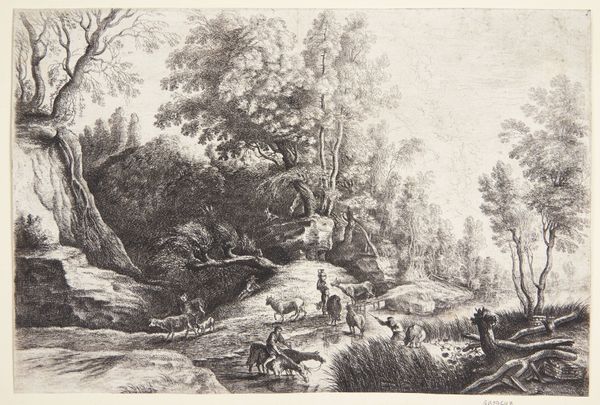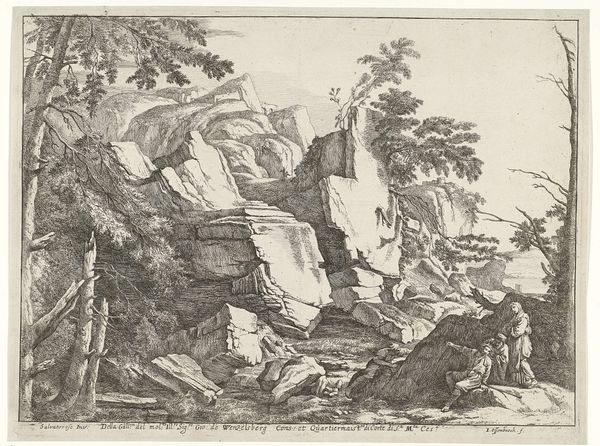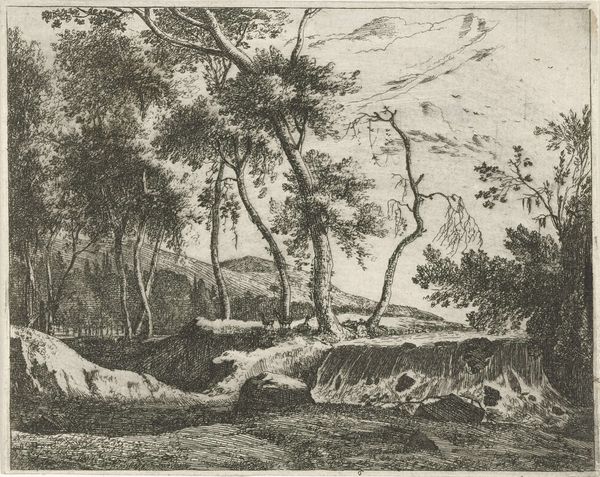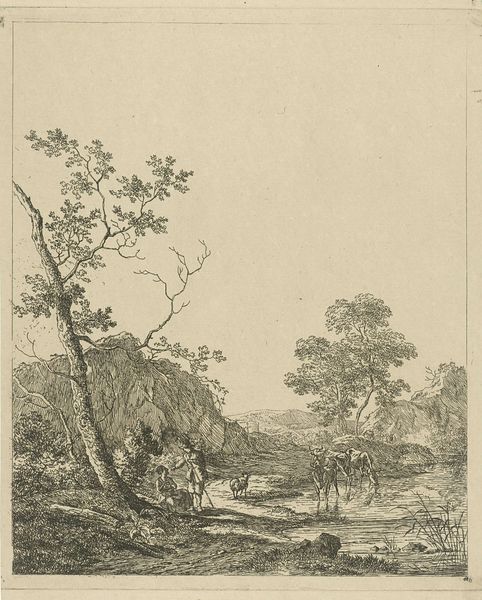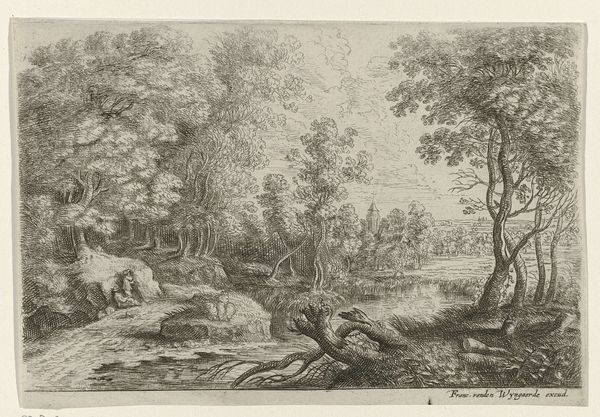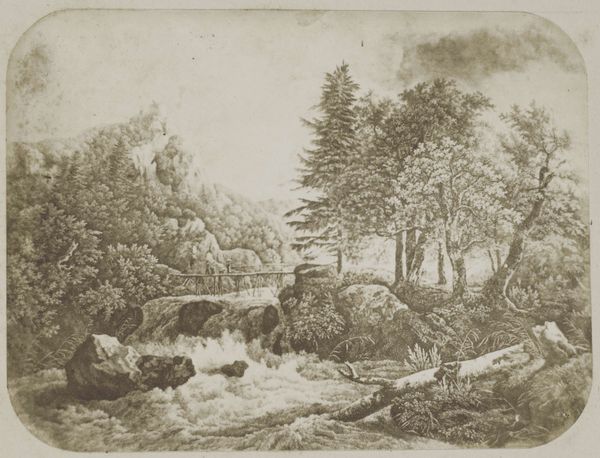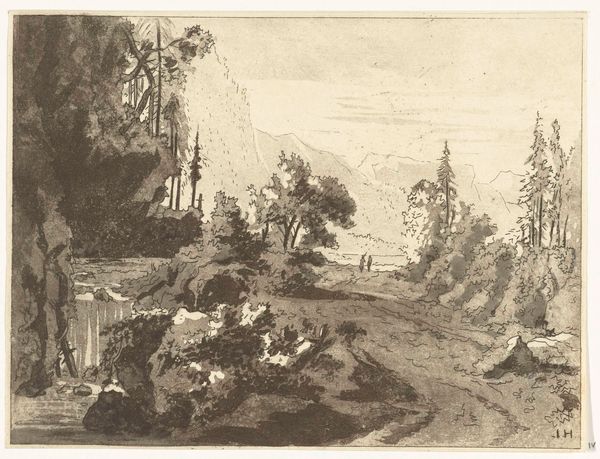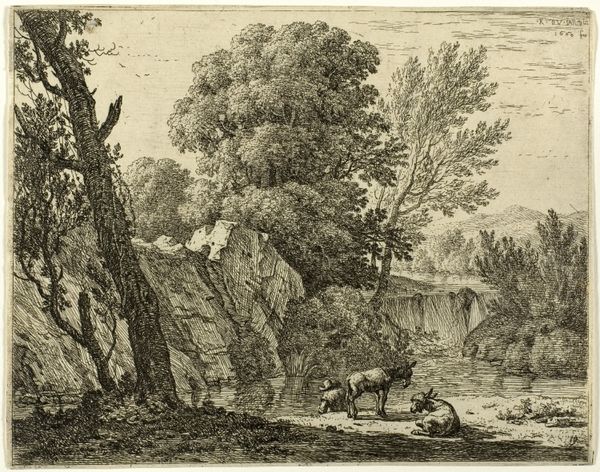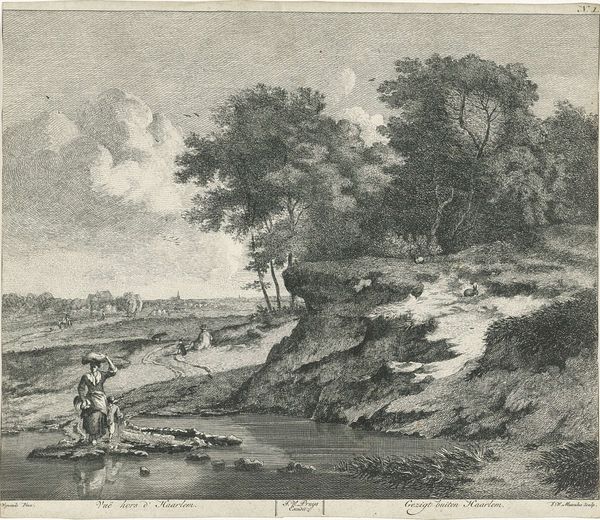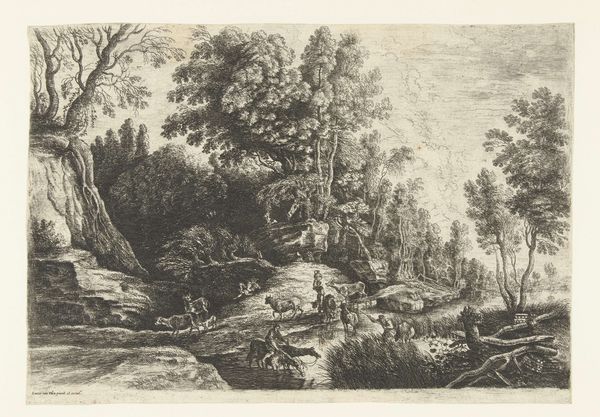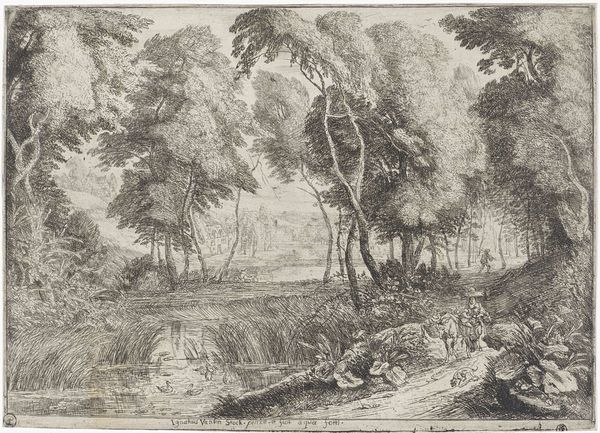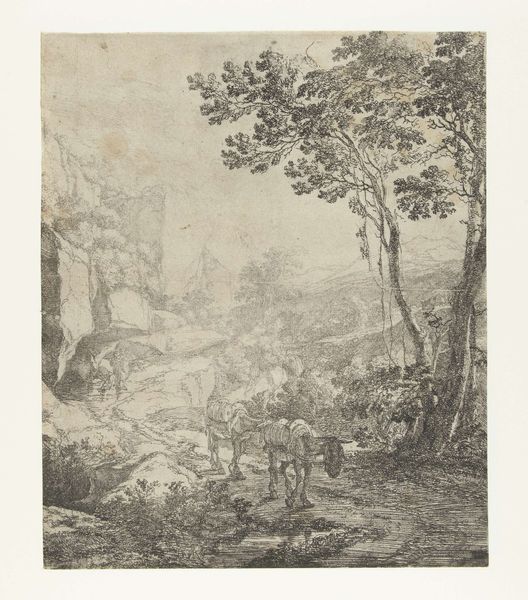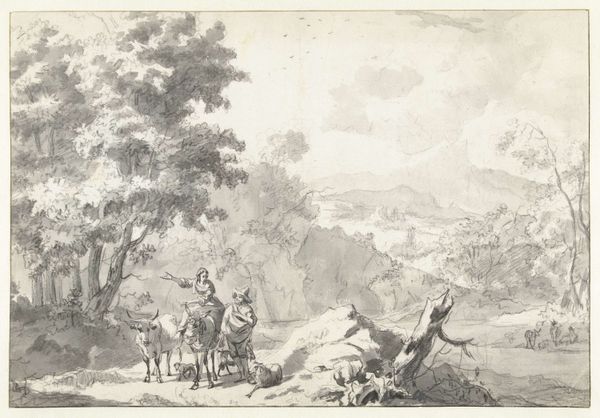
etching
#
dutch-golden-age
#
etching
#
landscape
#
genre-painting
#
realism
Dimensions: height 188 mm, width 277 mm
Copyright: Rijks Museum: Open Domain
Lucas van Uden made this etching of horses and cows at a watering place. The processes involved in etching begin with a metal plate, usually copper or zinc. The surface is coated with a waxy, acid-resistant substance called a ground. The artist then uses a needle to draw through the ground, exposing the metal beneath. The plate is immersed in acid, which bites into the exposed lines, creating incised marks. The longer the plate is left in the acid, the deeper the lines become, and the more ink they will hold. Once the etching is complete, the plate is inked, and the surface wiped clean, leaving ink only in the etched lines. Damp paper is then pressed against the plate, transferring the ink to create the final print. This printmaking method allowed for the relatively efficient production of multiple images, which speaks to the commercialisation of art in Van Uden’s time. This etching process democratised art in its own way, making it more accessible to a wider audience. This is because each etching can be reproduced multiple times, allowing the artist to profit from each one.
Comments
No comments
Be the first to comment and join the conversation on the ultimate creative platform.
